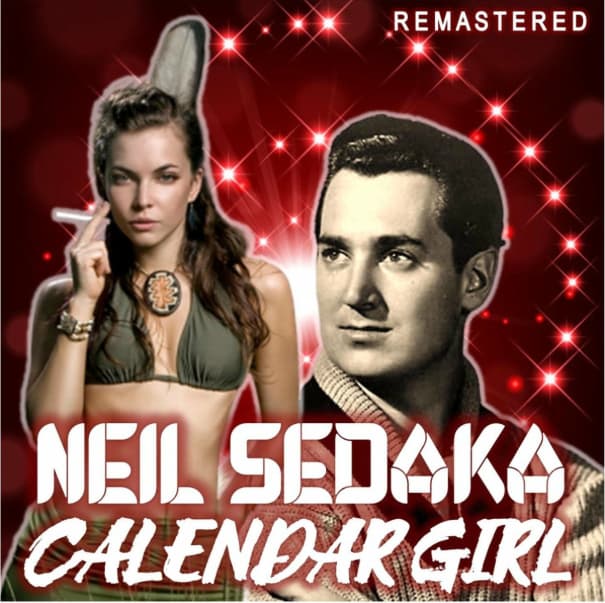
A Timeless Serenade to Youthful Affection
Oh, to be whisked back to a time of innocent crushes and simple pleasures, when the turn of a calendar page brought not just a new month, but another reason to adore that special someone. Such is the enduring charm of Neil Sedaka’s delightful hit, “Calendar Girl.” Released in December 1960, this effervescent tune quickly climbed the charts, becoming a global sensation. It soared to an impressive No. 4 on the US charts (Billboard, Cash Box, and Music Vendor), reached No. 3 in Australia, and achieved the pinnacle of success by hitting No. 1 in both Canada and Japan. In the United Kingdom, it found its home comfortably within the top 10, peaking at No. 8. This widespread success was a testament to its universal appeal, striking a chord with teenagers and dreamers across continents.
The story behind “Calendar Girl” is intrinsically linked to the legendary songwriting partnership of Neil Sedaka and Howard Greenfield. These two luminaries of the Brill Building era were a match made in pop heaven, crafting countless hits that defined an entire generation. While Sedaka himself composed the irresistibly catchy music, it was Greenfield’s lyrical genius that brought the “calendar” concept to life. Inspired by the classic pin-up calendars of the era, the song playfully outlines a different reason to adore the titular “Calendar Girl” for each month of the year. It’s a G-rated array of verbal pin-ups, celebrating the sweetness and charm of youthful affection without a hint of impropriety. From February’s “little Valentine” to September’s “sweet sixteen,” each line paints a vivid, charming picture, drawing listeners into a world of innocent romance.
The song’s meaning is beautifully straightforward: it’s a testament to unwavering, year-round admiration for a beloved. It speaks to that intense, all-consuming infatuation of youth, where every passing day offers a new facet of attraction. There’s a certain purity to the lyrics, a reflection of a simpler time when expressions of love were often cloaked in such charming, almost whimsical, imagery. It perfectly captured the zeitgeist of early 1960s pop music, a sound characterized by catchy melodies, clean harmonies, and relatable themes of young love and innocent flirtation. The instrumentation, expertly handled by Stan Applebaum and His Orchestra, with Gary Chester on drums providing that irresistible shuffle beat (reportedly inspired by Lloyd Price’s “Personality”), gives the track its distinctive, upbeat feel.
While “Calendar Girl” was not part of an initial studio album release in 1960, its immense popularity ensured its inclusion on numerous Neil Sedaka compilations and greatest hits albums over the decades, such as The Very Best of Neil Sedaka and Calendar Girl – 25 Hits & Favorites. Its enduring presence on these collections speaks volumes about its timeless appeal and its status as one of Sedaka’s signature tunes.
For those of us who came of age during that magical era, “Calendar Girl” is more than just a song; it’s a cherished relic, a sonic snapshot of youthful exuberance and tender affections. It evokes memories of sock hops, soda fountains, and innocent dates, a time when the biggest worry was whether your crush knew how much you adored them. The song’s cheerful tempo and Sedaka’s earnest vocal delivery perfectly encapsulate that sense of hopeful anticipation and delight. It’s a sweet, nostalgic journey back to a time when love was expressed with such charming simplicity, reminding us that some feelings, like some melodies, are truly eternal. It’s a gentle whisper from the past, reminding us of the enduring power of a catchy tune and a heartfelt sentiment to capture the hearts of generations.